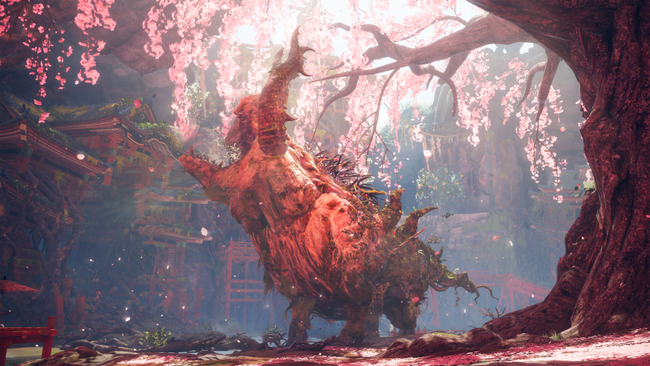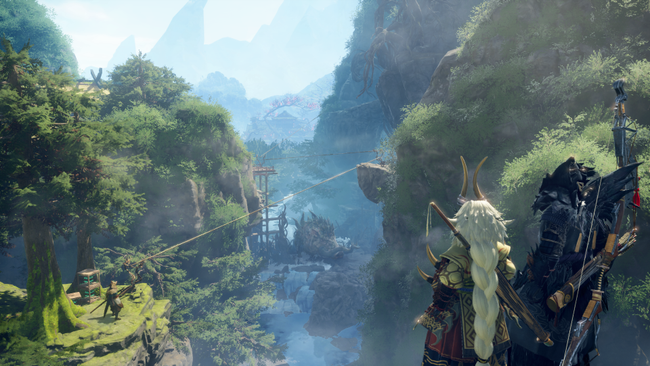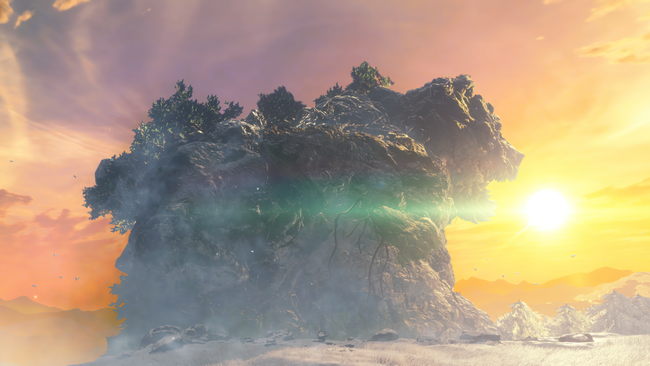
Wild Hearts feels primed to offer Monster Hunter its first real competition
Sitting down for my chance to preview Wild Hearts, I was struck by how the Hunting Action genre has almost well and truly been dominated by Capcom's flagship series. Back when the PlayStation Vita was a supported platform in Japan, it felt like every Japanese company under the sun had to try their shot at a game to take on the king of the genre - yet for all their worth, titles like God Eater, Freedom Wars, Soul Sacrifice and Toukiden have all but dried out. Yet, with Monster Hunter: World’s massive success - selling over 20 million copies - it felt like only a matter of time before some major Western company threw its hat into the ring. Enter EA and Koei Tecmo’s collaboration with Wild Hearts, a new 3-person co-op Hunting Action title.
First things first; this game is not Toukiden. Despite Koei Tecmo’s previous foray into the genre, Wild Hearts is its own take on a similar idea. While players will once again take control of a hunter within Japan-inspired locales - Wild Hearts has players tasked with killing Kemono, instead of more traditional Japanese demons. As something of a unique twist, Kemono themselves are akin to a living force of nature. While each of the three I faced resembles a sort of animal, such as the Kingtusk which is clearly a giant Boar meshed with a tree, they all have their own unique elements that especially come into play whenever a Kemono enrages.

As a current-gen exclusive, even in the preview build’s early stage, it’s striking just how much the environment warps to the Kemono’s actions. When a Sapscourge enrages, it will start flinging hot magma-like sap everywhere, coating large portions of the arena, and forcing you to adapt your playstyle. When a Kingtusk becomes angry, large portions of the environment will become enveloped in tree branches, stumps, and even waves of jutting wood that require the player to effectively decide when to weave closer to the Kemono to attack.
Karakuri is a feature unique to Wild Hearts, which allows players to craft machinery that can be used to help alongside a hunt. These can be as simple as blocks you can jump off, barricades that can counter a Kemono’s attack, and environmental weapons such as bombs and hammers. Outside of combat, players can expend energy gained from purifying Springs to create mechanisms such as watchtowers to help track down Kemono in the field, tents that can be placed at potential campsites to expand fast travel capabilities and even create your own zip lines that can help you more easily access hard-to-reach areas.

Combat itself is fairly similar to Monster Hunter - there’s a weight to your attacks that might not appeal to everyone, but after some time getting used to it the weapons feel right at home to anyone who has played their fair share of Capcom’s own series. They’re not carbon copies of course, but more different - yet similar takes - on weapons. For example, Wild Hearts’ equivalent of the Longsword doesn’t have the spirit combo from Monster Hunter; yet once you fill up its bar, you can start spamming attacks that turn the sword into a sort of segmented whip.
It’s hard to get a feel for the locations of Wild Hearts after only a few hours, and going off of only one of the game’s 4 regions; EA states that each region is meant to symbolize a season, with the section that press got to play representing Spring. Although the game isn’t properly open-world, each zone itself is plenty large and open in and of itself. In other words, you won’t be feeling constricted whenever you’re moving around the environment, hunting your prey.

Visually it’s a little difficult to judge; parts of the game look phenomenal at this point and really showcase how different a current-gen exclusive can look with how dynamic the environments react to the Kemono’s actions. Yet other aspects look noticeably lower fidelity; considering what we played was a clear work in progress, and optimization has yet to be done, it’s probably a safe assumption that the final game will look and run better. Hopefully, at least - stuttering was a very real concern, going by the demo. Considering how many Japanese PC releases have suffered from shader-compilation stutter in recent years, we can only pray that shaders are pre-compiled come the full release down the line.
All in all, the current state of Wild Hearts is incredibly promising; while it’s far from perfect, there’s more than enough room in the industry for games to attempt to compete against Monster Hunter. Whether the full game will live up to that promise is another matter entirely, but for now I can’t help but be excited to explore the rest of the game come its February 17 release date.